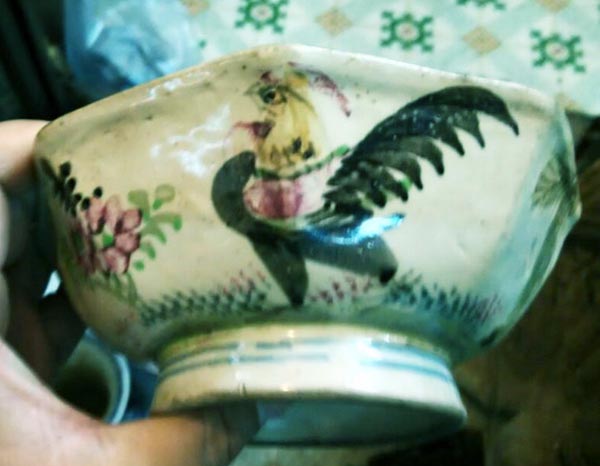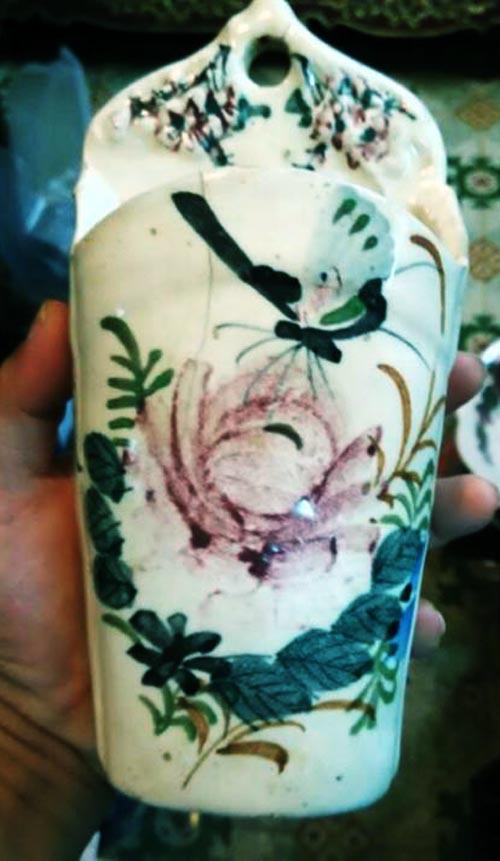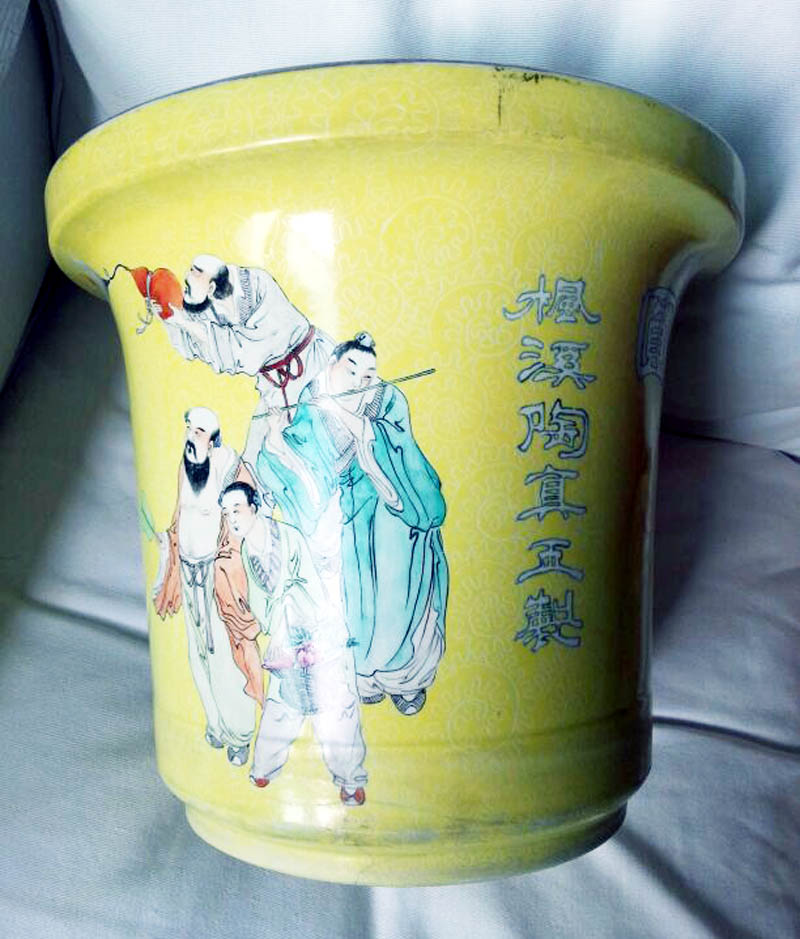


Late Qing and Republican-Era Guangdong Chaozhou Fengxi (枫溪) Porcelain
Guangdong Chaozhou boasts a rich tradition of ceramic production dating back to the Tang Dynasty when it produced high-quality celadon wares exported to Southeast Asia. Some of these celadon wares were discovered in the Belitung shipwreck Tang cargo. Chaozhou ceramics production peaked during the Northern Song period, with kilns primarily located at Bi Jiashan (笔架山) on the east bank of the Han River. Large quantities of Qingbai, white, and celadon wares were transported to the Guangzhou port for export.
During the Southern Song period, Fujian Quanzhou emerged as the dominant port in southern China, leading many Fujian kilns to produce competitive, cost-effective ceramics for export. Guangdong lost its prominence, and many Chaozhou kilns ceased production.
Emergence of the Fengxi Porcelain Industry
In 1856, the conclusion of the Second Opium War forced the Qing government to open more coastal ports, including Shantou (Swatow). Chaozhou kilns, particularly those in Fengxi, Dapu Gao Pi (大埔高披), and Raoping Jiucun (饶平九村), experienced a resurgence. Chaozhou Fengxi focused on producing enameled, monochrome, and blue-and-white wares exported through Shantou.
The First World War further boosted Fengxi porcelain production. Before the war, European transfer-print ceramics dominated the market due to their low cost and appealing designs. However, the war disrupted European production, allowing Fengxi to meet local and international demand. From 1915 to 1939, the Fengxi Porcelain Industry thrived, supported by an extensive marketing network established by Chaozhou emigrants in Southeast Asia. These communities not only sold Fengxi ceramics but also operated kilns, producing items such as latex-collecting cups and flower pots.
In 1923, Vietnam imposed heavy import taxes on ceramics, prompting some Fengxi potters to migrate to Vietnam and produce wares locally. Even the clays used in Fengxi production were sometimes imported.
 |
|
| Map showing location of Fengxi | |
 |
|
 |
|
| Fengxi type in-glaze wares produced in Vietnam | |
Characteristics and Types of Fengxi Porcelain
Fengxi porcelain is often slightly under-fired, with a yellowish glaze that develops fine crackles. During the Republican period, Fengxi imported enamels to produce overglazed wares, which required a second firing at around 800 degrees. These enamels appeared smooth and watercolor-like, distinct from the powdery texture of Fencai (famille rose). At its peak, Fengxi had 17 Cai Guan (彩馆) enameling workshops employing around 300 workers.
|
|
|
|
An example showing the yellowish glaze which has faint fine crackles. The unglaze foot ring showed the paste to be less dense, slightly grainy and has a yellowish tone. |
|
|
|
|
 |
|
| Two example of overglazed enamelled wares. Compared with Fencai, the enamels do not have the powdery texture and appear smooth and thin . The first made by Rong li (荣利) and second Tao Zhen Yu (陶真玉) factory. Both are famous makers of fengxi porcelain. | |
By the late 1910s, potters introduced Japanese high-temperature enamels, leading to the development of Fengxi Da Yao Wucai (枫溪大窑五彩), a form of in-glaze decoration where the glaze flows over the decoration during firing. This technique proved economically efficient and became a signature of Fengxi ceramics.
|
|
|
 |
|
|
|
|
|
|
|
|
|
|
|
|
|
|
|
|
|
|
|
|
Republican period Fengxi Da Yao Wucai (枫溪大窑五彩) |
|
|
|
|
|
|
|
| Two Republican period examples with interesting sprayed enamels | |
|
|
|
|
|
|
|
|
|
| Exhibits in Yi Tao Xuan (颐陶轩), a private Museum in Chaozhou | |
Distinctive Products and Artistic Contributions
Fengxi porcelain included tableware decorated with traditional Chinese motifs and motifs inspired by European and Japanese ceramics. The potters also produced intricate open-work vessels and milky white figurines, often portraying characters from Chaozhou opera. Master artist Chen Hong Xi (陈鸿禧) created sets based on operatic tales in the early 1950s. Additionally, Fengxi produced substantial quantities of blue-and-white wares, distinguishable by their yellowish glaze and fine crackles.
|
|
|
|
Republican period cup with European floral motif. Product of Ru He (如合) factory. |
|
|
|
|
|
Republican period Fengxi vessels with European motif and vessel forms |
|
|
|
|
| Republican period vases with open work decoration | |
|
|
|
| Republican period Fengxi Yuan Yin Figurine | |
|
|
|
| Figurine of Wang Zhao Jun dated to 40/50s | |
|
|
|
| A set based on characters from the Chaozhou opera on the romantic tale of Ming painter Tang Bo Hu (唐伯虎) and Qiu Xiang (秋香). It was made by master artist Chen Hong Xi (陈鸿禧) in the early 1950s. | |
 |
|
|
|
|
| Two Republican period Fengxi blue and white exhibited in Yi Tao Xuan (颐陶轩) | |
|
|
|
|
|
|
|
|
|
|
|
|
| Republican Fengxi blue and white wares | |
Another notable product was a form of Yixing-style teapot, coated with a red clay slip that mimicked the appearance of Yixing wares. However, the interior revealed a rough, lighter reddish tone.
|
|
|
Republican Fengxi Yixing-type tea pots |
|
|
|
|
| Comparison of Fengxi and Yixing clay pot. Both examples are from the 70/80s. |
Post-1949 Developments and Legacy
After the Communist takeover in 1949, the Fengxi Porcelain Industry was nationalized. Production continued, and Fengxi emerged as a key porcelain production center in China, often referred to as the new Porcelain Capital. The industry has maintained its prominence, evolving with modern techniques while preserving its historical craftsmanship.
|
|
|
|
|
|
|
|
|
Fengxi Examples dating from 1950s/1970s |
|
|
|
Contemporary Fengxi Figurines |
In conclusion, Fengxi porcelain stands as a testament to Chaozhou's enduring ceramics legacy. From its Tang Dynasty origins to its post-Republican resurgence and contemporary status, Fengxi has consistently adapted to market demands and technological advancements. Its rich history and artistic contributions continue to hold a significant place in the global ceramics landscape.
Reference: 枫溪潮州窑 - Written by Li Bingyan
Written by: NK Koh (New: 4 Apr 2014), updated: 20 Mar 2025